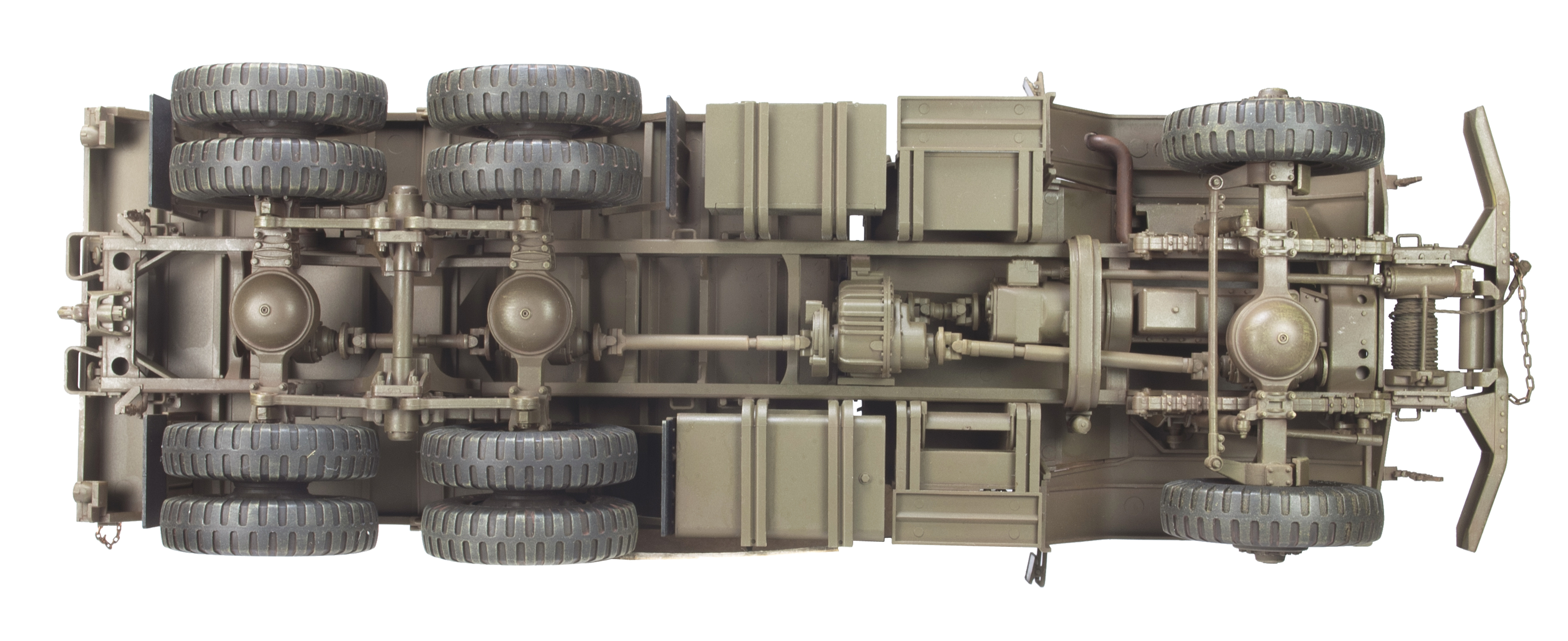產品介紹
Products
M54 五噸6X6卡車





Affected by her isolationism at the onset of WWII, United States lagged behind her European counterparts in both size and technology. It was not until the dawn of WWII that the United States realized involvement in the conflict was inevitable and began to build up its military. As part of that build up in 1939, the United States Army issued a specification for a medium sized military transport truck. It was required to be an all weather, all terrain, six wheeled pickup with a 2.5 ton weight capacity. It was also required to be able to transport a fully equipped platoon of infantry, tow light artillery pieces, and be of a design that could be easily mass produced. Since the United States had a robust and established automotive industry, it was able to deliver over eight hundred thousand military transport units of various models in relatively short time from design to mass production. These mid-sized vehicles formed the backbone of military transport logistics for the United States and its allies during WWII.
During WWII, the United States had both 4- and 6-ton class tactical transports for towing the 155mm howitzer and 90mm cannons. In order to simplify logistics the US Army wanted to replace both with a new 5-ton six-wheeled platform prior to the end of the war. To that end it issued a specification for a new 5-ton tactical transport capable of carrying 25 personnel including the driver. A conservative design by International Harvester designated M39 won the bid. The M39 was a six-wheeled platform that shared it’s gasoline engine and other components with the M35 2.5 ton transport. Later on in development it was re-designated the M54 with the addition of two more wheels per rear axle.
With the M54 chassis established as the basic platform other related variants were developed. In 1962 came the M54A1, in which a diesel engine replaced the gasoline-powered engine solving its power deficiencies. In 1963, further development of a multi-fuel powered version culminated in the M54A2, which went into production and entered service in Viet Nam. During its tenure in the conflict, the M54 became the backbone of logistics for both the US Army and US Marine Corps. Until de-mobilized M113 armored troop carriers were utilized, machine guns and armor plating were added to the M54A2 for convoy defense.
Due to it’s increased efficiency the M39 gradually replaced with the M35 series transport. The M39 was in production from 1952 to 1965 by several different manufacturers. Thus, there are many differences with regards to external features based on both the time period and specific manufacturer. Furthermore, in 1970, the M809 (also 5-ton class with all terrain capability) was developed using the M54A2 as a base. It adopted diesel as its source of power complemented with a strengthened braking system. The M809 did not, however, replace its predecessors. The two types served concurrently in the military until their replacement by the M939 series in 1982.
1. ■FRONT WHEEL ADJUSTABLE STEERING.
2. ■PRECISELY REPLICATES DETAILS OF CABIN INTERIOR.
3. ■HIGHLY DETAILED TRANSMISSION SYSTEM.
4. ■BUCKET SEATS CAN CHOOSE SPREAD OUT OR NOT.
5. ■CARGO BUCKET CLOTH CAN CHOOSE INSTALL OR NOT.
6. ■ACCURATELY REPRODUCED CHASSIS & SUSPENSION SYSTEMS ARE BASED ON THOROUGH STUDY OF ACTUAL VEHICLE.
7. ■PRECISION PHOTO-ETCHED PARTS ARE INCLUDE
8. ■PLASTIC INJECTION MOLDING TIRES.
9. ■THREE TYPES DECAL FOR VIETNAM WAR.
1. ■前輪可轉向
2. ■駕駛室內部精細再現
3. ■精細的傳動系統
4. ■貨斗座椅可選擇是否摺疊。
5. ■貨斗蓬布可選擇裝配與否
6. ■考證實車的車輛底盤與懸吊系統
7. ■附精密蝕刻片
8. ■塑膠射出輪胎
9. ■越戰時期三種塗裝/水貼
1. ■前輪のステアリングが可動
2. ■運転席キャビン内部を精密に再現
3. ■精密な駆動システム
4. ■荷台の座席は折り畳みを選択可能
5. ■荷台の幌の装着は選択可能
6. ■シャーシ、サスペンション機構は、実車取材により正確に再現
7. ■精密なエッチングパーツ付属
8. ■プラスチック製タイヤパーツ
9. ■ベトナム戦争中のデカール及び塗装ガイド3種付属
